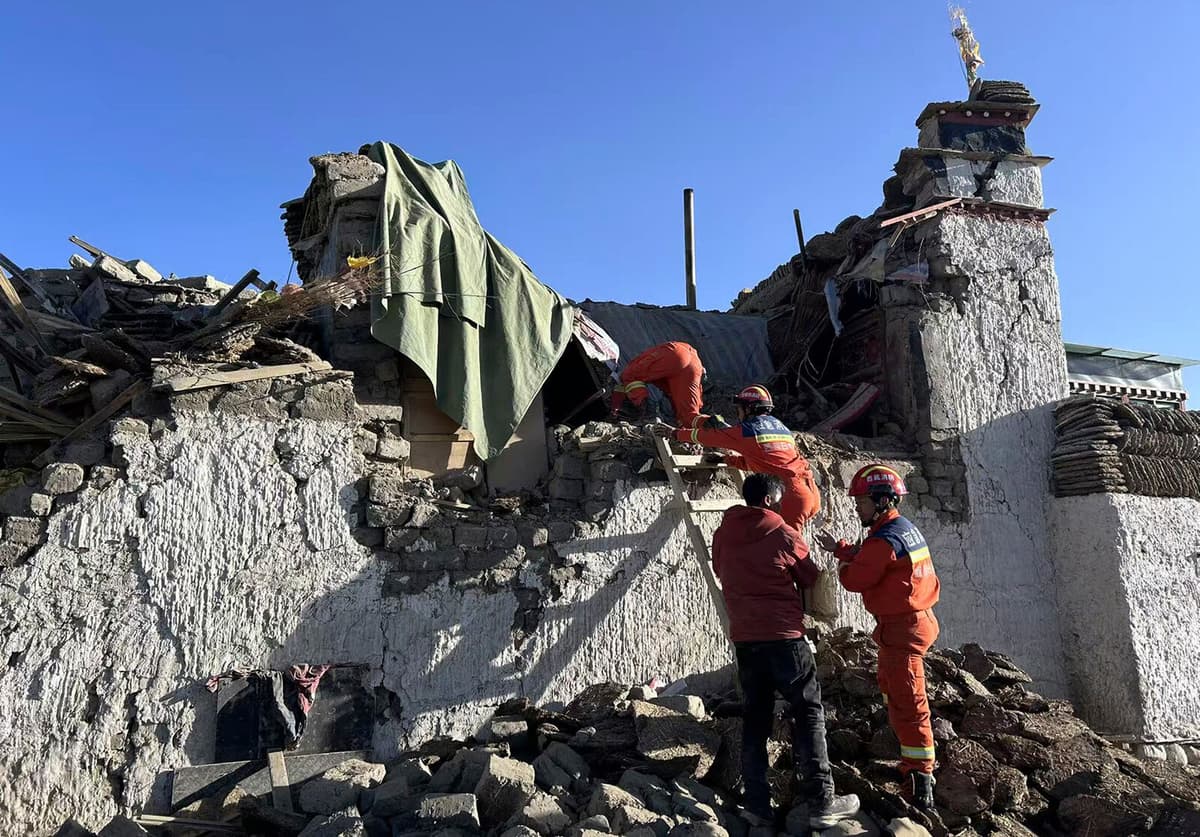The number of confirmed dead continued to rise throughout Tuesday. In the afternoon, an official message reported at least 126 dead. However, reports testified that many were trapped in rubble or affected by aftershocks.
About 50 aftershocks had been registered by the afternoon.
Over 180 people were injured on the Chinese side of Tibet, according to China's state news agency, Xinhua.
Many houses here are made of clay. When the earthquake occurred, they collapsed, says Sangji Dangzhi, who owns a grocery store in Tingri near the border with Nepal, to AFP over the phone.
The store is reported to have suffered extensive damage. Dangzhi describes the situation as "very serious" and adds that ambulances have been driving people to hospitals all day.
Frozen at Minus Degrees
Over a thousand buildings were damaged in the earthquake, according to Xinhua.
The ongoing search and rescue efforts are said to employ around 1,500 people. Mobile footage on China's state TV channel CCTV shows destroyed houses and city walls, as well as rescue workers trying to make their way through rubble to provide survivors with blankets.
The efforts are focused on minimizing the number of casualties and "helping residents to safety and protection during the winter," says China's President Xi Jinping on the same TV channel.
The temperature in Tingri is around minus eight degrees.
Felt in Neighboring Countries
According to China's geological organization CENC, the magnitude of the quake was 6.8, while the US Geological Survey USGS measured it at 7.1. It is reported to have been felt in Nepal's capital Kathmandu and parts of India.
In April 2015, Nepal was hit by an earthquake that claimed nearly 9,000 lives and destroyed over half a million houses.
Tibet, often called "the roof of the world", is formally an autonomous region in western China.
China's leaders claim that Tibet has been part of China for several hundred years, while Tibetans argue that the area has been an independent kingdom with self-governing periods.
In 1950, Chinese forces invaded and forcibly annexed the area. Tibetans were forced to recognize China's sovereignty in exchange for Beijing's respect for Tibetan religion and customs. In practice, the country began to be fully incorporated into China.
After a series of uprisings and a failed revolt in 1959 – resulting in thousands of Tibetan deaths – Tibet's 14th Dalai Lama, Tenzin Gyatso, fled. Together with hundreds of thousands of followers, an exile government was established in the Indian mountain town of Dharamsala.
Beijing's control over Tibet is described as total, with extremely limited opportunities for residents to use their language and practice their religion and culture.
Source: Landguiden/UI, Human Rights Watch (HRW)





